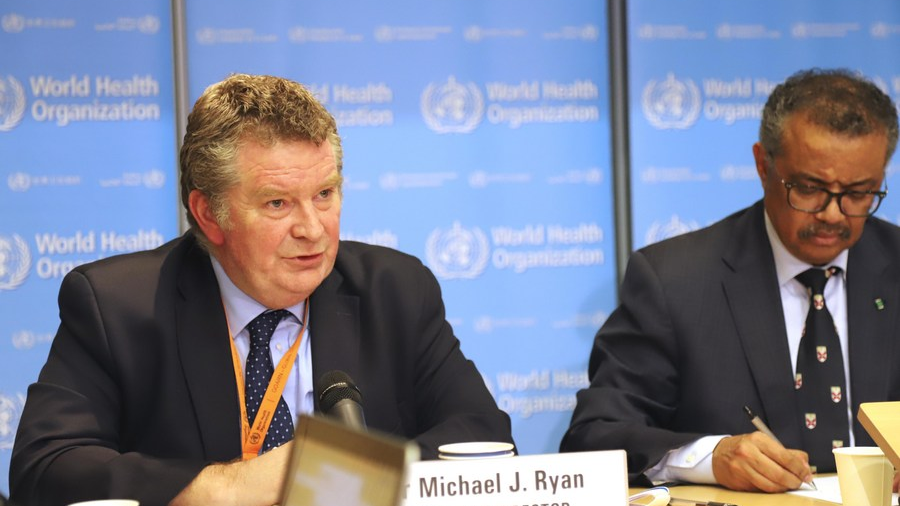
Dr. Michael Ryan(L), executive director of the World Health Organization (WHO) Health Emergencies Program, addresses a press conference in Geneva, Switzerland, Feb. 18, 2020. /Xinhua
Dr. Michael Ryan(L), executive director of the World Health Organization (WHO) Health Emergencies Program, addresses a press conference in Geneva, Switzerland, Feb. 18, 2020. /Xinhua
Although the first clusters of atypical pneumonia were reported in Wuhan, China, it doesn't necessarily mean that is where the COVID-19 disease crossed from animals into humans, a senior World Health Organization (WHO) expert said on Monday.
Dr. Michael Ryan, executive director of the WHO Health Emergencies Program, said at a routine COVID-19 briefing on Monday that a much more "extensive retrospective epidemiological study" should be taken to fully understand the links between the cases.
He stressed the need to start studies on the first reported human clusters in order to systematically look for the "first signal at which the animal-human species barrier was crossed," before moving to the studies on the animal side.
The WHO advance team that traveled to China in preparation for an international mission of identifying the zoonotic source of COVID-19 has concluded its mission recently, according to the WHO expert. Future studies will build on the initial investigations done by Chinese experts around the Wuhan seafood market.
Ryan also noted that WHO is moving forward with agreeing on the international team and ensuring that right expertise will be in place to work with the Chinese counterparts to design and implement further studies.
Source(s): Xinhua News Agency